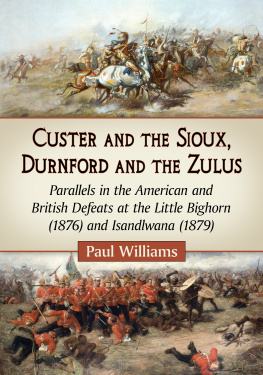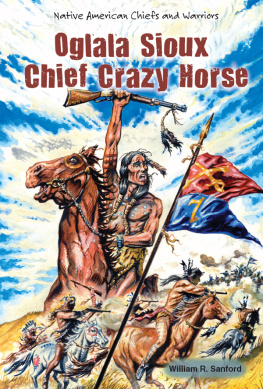
This edition is published by PICKLE PARTNERS PUBLISHINGwww.picklepartnerspublishing.com
To join our mailing list for new titles or for issues with our books picklepublishing@gmail.com
Or on Facebook
Text originally published in 2003 under the same title.
Pickle Partners Publishing 2014, all rights reserved. No part of this publication may be reproduced, stored in a retrieval system or transmitted by any means, electrical, mechanical or otherwise without the written permission of the copyright holder.
Publishers Note
Although in most cases we have retained the Authors original spelling and grammar to authentically reproduce the work of the Author and the original intent of such material, some additional notes and clarifications have been added for the modern readers benefit.
We have also made every effort to include all maps and illustrations of the original edition the limitations of formatting do not allow of including larger maps, we will upload as many of these maps as possible.
THE ARMYS SIOUX CAMPAIGN OF 1876: IDENTIFYING THE HORSE AS THE CENTER OF GRAVITY OF THE SIOUX
By
MAJ Mark V. Hoyt, USA
TABLE OF CONTENTS
Contents
TABLE OF CONTENTS
REQUEST FROM THE PUBLISHER
ABSTRACT
During the first half of 1876 the Army conducted three expeditions against the Sioux and Cheyenne Indians. The results of these three expeditions were: the first expedition destroying a small village, the second expedition being defeated in a meeting engagement, and the third expedition suffering the annihilation of five companies. The results lead to questioning the Armys focus on attacking and destroying villages as the primary target of their expeditions. If the Army had a complete understanding of the Sioux they would have realized that the hub of all power or center of gravity of the Sioux was the horse, which every major aspect of Sioux life was augmented and dependent upon. The first three expeditions of the Sioux Campaign of 1876 demonstrate that: senior Army commanders planned their campaigns, expeditions, and organizations around their knowledge of Sioux mobility, the primary source of power for the Sioux warrior was mobility gained from the horse, Army forces could not bring their advantage in firepower to bear on Sioux warriors. Army commanders understood the mobility of the Sioux village and their warriors, but they failed to take the next stepchallenging the old assumption that attacking villages and using a strategy of exhaustion was the correct way to subdue the Sioux. Instead, Army forces should have concentrated their attacks on center of gravity of the Siouxthe horse.
ACKNOWLEDGMENTS
Many thanks go to the people that assisted me during the last year in the writing of this thesis. First and foremost thanks go to my wife Tracy who spent hundreds of hours of taking up the slack while I worked on my writings. In addition, more thanks to Tracy for allowing and encouraging me to obtain my second masters degree by writing on something that is one of my true loves, frontier warfareISHMYLM. Further thanks to my committee: Dr. Jerold Brown, Lieutenant Colonel Mike OBea and Major Jeff Storch, who took the time to help me, discuss my topic, make editorial comments, and keep my thesis on track. Final thanks go to the remainder of my family, D.J. and Isabel for being patient with their father while he worked on his thesis.
ILLUSTRATIONS
Figure
- Sioux Reservation System and Unceded Territory
- The Horse as the Sioux Center of Gravity .
- The Coordinate SystemArmy Chain of Command in 1876
- Manned Posts in the Departments of the Platte and Dakota in 1875.
- Force Locations in the Departments of the Platte and Dakota in 1875.
- Initial Force Movement for Powder River
- Organization of Crooks Powder River Expedition
- March Route of Army Forces for Powder River Expedition
- Reynoldss Organization for the Battle of Powder
- Reynoldss Plan of Attack for Powder
- Actual Disposition of Reynoldss Forces at Start of Battle
- Mills and Egan take the Village
- Reynoldss Destroys Village
- Final Organization of the Rosebud Expedition
- Route of Crooks Rosebud Expedition
- Initial Stages of the Battle of the Rosebud.
- Army Counterattacks at the Rosebud
- Crook Splits His Forces
- End of the Battle of the Rosebud.
- Terrys and Gibbons Early Campaign Approaches
- Custers and Gibbons Pincer Movement on the Village
- Custers Approach on the Village.
- Custers Final Organization.
- Renos Attack and Rout
- Custers Final Approach
CHAPTER 1 INTRODUCTION AND BACK GROUND OF THE SIOUX NATION
In 1876 the government of the United States assigned the U.S. Army the mission of forcing the Sioux Indians onto their reservations permanently. The Army had emerged from the Civil War in 1865 organized to fight large-scale campaigns and battles against a conventional opponent. Eleven years later, after several force reductions, the Army was adapting its doctrine and tactics to fight an irregular enemy who used unconventional tactics on a non-linear and non-contiguous battlefield.
During the first half of 1876, the Army enforcing U.S. Governmental directives conducted three expeditions against the Sioux and their Cheyenne allies. As part of a campaign, all three expeditions primary objective was to attack hostile Indian villages to return the Sioux and Cheyenne to the reservations. The results of the three expeditions were: the first expedition destroyed a small village at the Powder River; the second expedition was defeated in a meeting engagement at the Rosebud River; and the third expedition suffered the annihilation of five companies of the 7th Cavalry at the Little Big Horn River. The results of these expeditions lead to questions regarding the Army strategy of attacking Sioux villages as their main goal
What was the center of gravity (COG) of the Sioux Nation? An answer to this question demands answers to several subordinate questions: What was the history of the Sioux? What were the possible center(s) of gravity of the Sioux Nation? What did the Army identify as the target of their expeditions during the 1876 campaign? Did the Armys strategy and operational maneuver adapt and evolve to their enemy? Did the tactics used by Army officers recognize the enemys center(s) of gravity? What were the Armys center(s) of gravity? Were Army officers able to use their center(s) of gravity to gain a decisive edge over the enemy? And finally, what factors led to the Armys initial failure in a campaign directed against an enemy with limited resources, no industrial capability, an undisciplined force of warriors, and decentralized leadership?
To answer these questions, this paper will be divided into six chapters. The first chapter will explain the concepts of COG and decisive points and give a brief background of the Sioux Nation while discussing and identifying possible Sioux COGs. The second chapter will give a brief background to the U.S. Army in 1876, discuss campaign strategy and Army COGs. The third through fifth chapters will discuss the first three expeditions that led to major engagements against the Sioux and Cheyenne Indians in 1876. These three chapters will use historical evidence to provide proof that identified Sioux and Army COGs in chapters 1 and 2 are correct. Chapter 6 will provide a summation to the thesis.






